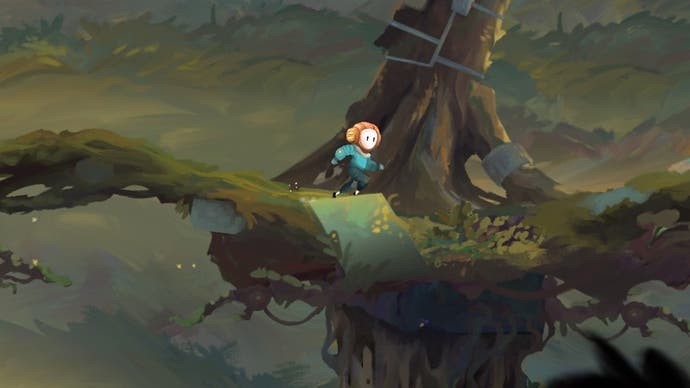Out of Line review - a chilled platformer that can feel a bit lacking
Here comes the San.
Out of Line isn't offensively rubbish or broken, nor are its mechanics frustratingly opaque. It's not horrible to look at or listen to, and playing through it left me chilled, which is not necessarily how I finish all my platformer sessions, believe me. The puzzles and platforming are perfectly perfunctory, and though it takes a little while to get used to your spear - more on that in a sec - there's not a single maddening sequence or frustrating boss fight to scupper your journey, making it wonderfully accessible for those who are new to the genre (or even new to gaming completely).
But after finishing up my second playthrough - my first took 90 minutes; my second just a little more than an hour - I'm still none the wiser as to what happened in this story, nor why. There are worst ways to while away an hour, granted, but though the game is beautifully simple - and simply beautiful - the truth is, it's a bit... well, unremarkable. As pretty as Out of Line is with its hand-drawn artwork and haunting soundscape, it's neither boring nor captivating. Neither terrible nor terrific. Instead, it sits somewhere in the middle of a mediocre no-man's-land.
To be clear, this no-man's-land isn't necessarily a bad place. It's just that the journey you take and the puzzles you encounter in Out of Line are not particularly memorable. There's zero challenge here. Coupled with an incredibly light-touch story - you're never formally introduced to the character you play as, and you never understand their motivations or backstory - it's hard to decipher what, exactly, is going on.
As for what's "out of line" here? Well, that's San, the tiny, pale-faced figure at the heart of this tale. After waking up in a strange land of monoliths and flying cubes, San works methodically through environs like a factory, a forest, and the belly of rusty machinery that spews scalding steam, trying to escape the mechanical claws of their pursuers, gigantic, oddly sentient machines that shriek and pin you with the glare of their searchlights.
San's not alone in their attempt to break free from this place, either; their journey is frequently accompanied by identical San clones, as well as two curious characters that pop up throughout the adventure to aid San on their journey. Together, you work collaboratively to unlock the pathway ahead, perhaps by standing on a pressure plate, or by cajoling the cute creatures that trail behind you into narrow vents to unclog machinery. At no point will the way forward ever feel so uncertain you'll need a partner to help unravel the solution, but it feels like such a wasted opportunity that a game that insists you work cooperatively with other NPCs stops short of extending that collaboration into a fully-fledged co-op mode, especially as the puzzler is so wonderfully child-friendly.
It's San's spear, then, that helps an otherwise unremarkable adventure stand out. While it's tempting to assume it's a weapon - and I certainly tried to use it that way when one of the game's only enemies scuttled towards me - it's purely a traversal device to help San reach high ledges and smack out-of-reach buttons. It can also be jammed into the ground at specific points to use as a lever, too, and while it's not necessarily the easiest thing to manoeuvre - especially as you'll sometimes need to throw it quickly and accurately to escape - given the puzzles are usually unhurried and uncomplicated, it's rarely frustratingly so.
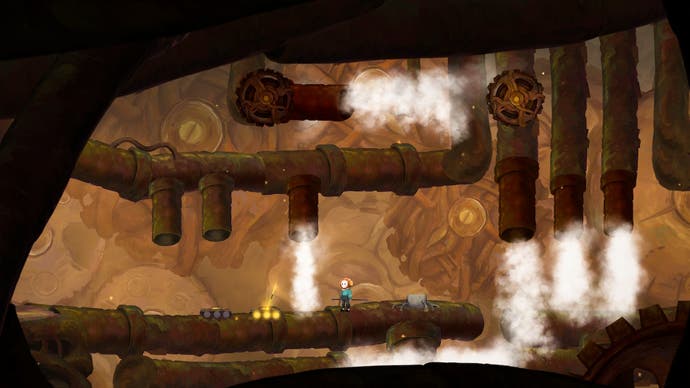
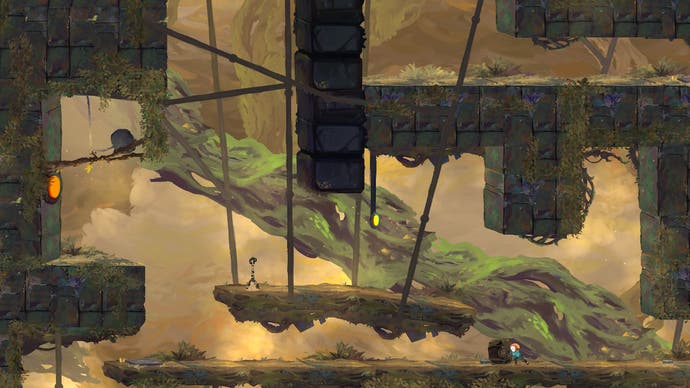
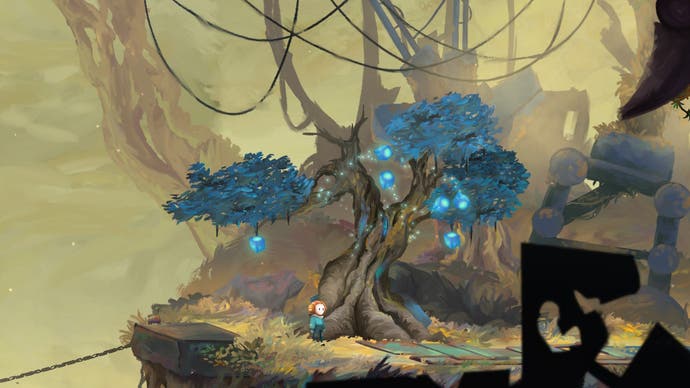
But though the set-pieces grow a tad grander and more ambitious as you progress through the story - I particularly liked the ropes bridges San can later fashion with their spear - the puzzles don't evolve anywhere near enough to keep the gameplay feeling fresh in even a game as short as this. Most puzzle sequences feel little more than recycled variants of the ones that came before.
It's undeniably beautiful, though. Everything - from San's small, dark eyes to their companions to the very world they explore - is hand-painted, offering a good, if not super generous, array of environments and levels. I never did understand why the magic flying cubes congregated on the blue-hued tree, nor why those curious mechanical claws hated me so much, but it doesn't matter, I suppose. Out of Line is less about telling than it is showing, and allowing us to interpret its dreamy, languid score and curious, painterly murals in any way we want. I just wish it offered more challenging puzzles and secrets to fully sustain my curiosity; there's certainly zero incentive to keep replaying in the hope of unlocking new secrets or endings, and even the collectables can be hoovered up quite easily during your maiden voyage.
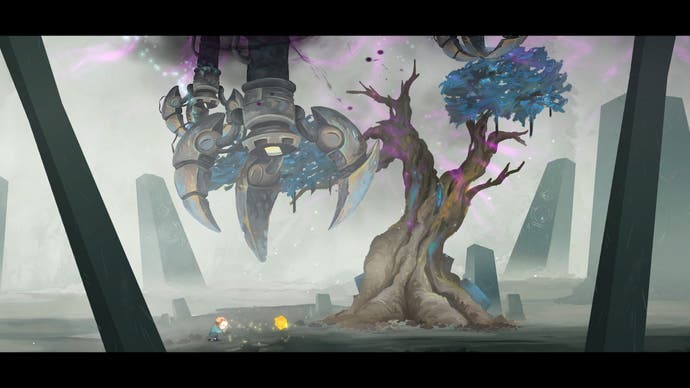
So while yes, I did enjoy my brief time with it, it's hard to unreservedly recommend Out of Line to even ardent fans of the genre as it's chiefly all style and no substance. I do, however, think it's the perfect beginner game to share with young or inexperienced players. Beyond a handful of icky crabs that pursue you throughout the adventure and a couple of simple chase sequences, there is no immediate peril, gore, nor bad language (or indeed any language at all; the game is silent save for its soundtrack and SFX), and few, if any, puzzles should stump even beginners for long.
No, Out of Line won't satisfy your Limbo or Inside platforming itch, but it's pleasant enough to while away an evening nonetheless.
